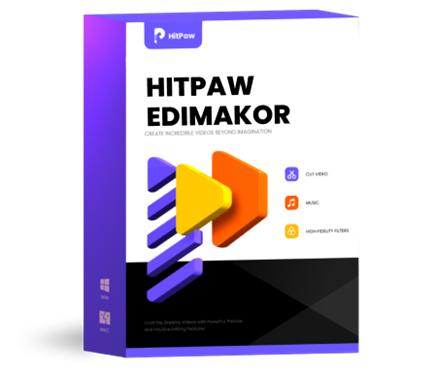How to Add a Picture to a Video: 2 Ways (Desktop & Mobile)
A picture placed over a video helps you point something out, drop in a logo, or share a reaction. Instead of pausing the footage or switching scenes, you just drop it where it fits. Most apps on phones and computers have this option in the editing section. Once the image is added, you can drag it, resize it, and line it up with the part of the video you want it in.
In this guide, we'll explore how to add a picture to a video on your browser (PC) and mobile devices.
Create Now!Part 1. How to Overlay/Add a Picture to Your Video Online - Desktop Browser
You can add or overlay a picture on your video, make your content stand out, and keep your viewers focused. It helps break up plain footage and adds context when you need to explain something.
How to do this on a PC? With Riverside, the steps are simple, and you don't need any editing background to get started. Here are the steps:
Step 1. Create Your Riverside Account
Go to the Riverside website and sign up for a totally free account. After creating your account, you'll land on the dashboard.
Once you are in the dashboard, there is an Import icon at the top bar. Click it and upload your video saved on your PC or Google Drive. You can even paste a YouTube link of your video to ass a picture to it.

Riverside supports videos in all layouts-square, vertical, or landscape. This makes it easier to create content for platforms like YouTube, Instagram, or TikTok without needing to resize elsewhere.
Step 2. Open the Editor
Click on your uploaded video and then select the "Edit" option shown just below the bottom right side of the video.

Then choose "Create New Edit."

This takes you into the editor, where you'll manage all visual changes, including picture placement and timing.
Step 3. Add Images Through the Tools Panel
Inside the editor, look for two options on the left: Images and Uploads. The Images tab lets you browse through royalty-free photos available inside Riverside. These are ready to use and save time if you don't have your own pictures.
To use your own picture, click on the "Uploads" tab, select "Images," and click the "Upload" button to import your picture.

After uploading, click on your image, and it will appear on top of your video. You can drag it to position it where you want and resize it by pulling the corners. To adjust how visible it is, change the opacity level until it blends the way you want.

Step 4. Match Picture Size to Video Aspect Ratio
If you want your image to cover the entire screen, its dimensions need to match the shape of your video. You can resize your image using a tool like Canva before uploading it to Riverside.
Use these standard dimensions based on your video format:
- Landscape videos: Use a 16:9 ratio, like 1920 x 1080
- Square videos: Go for a 1:1 ratio, like 1080 x 1080
- Vertical videos: Use a 9:16 ratio, such as 1080 x 1920

This ensures the image fills the frame completely without stretching or adding borders. You can also try different sizes to experiment with overlays that only appear in part of the frame.
Step 5. Set the Image Timing in the Timeline
Scroll down to the timeline and click on the image icon. This brings up the visual layer of your image, showing exactly when it appears and disappears. Drag the start and end points to control its duration. You can also move the entire image bar to any section of your video.

Repeat these steps to add more images throughout the video. You can time them to appear during specific moments or spread them out for a more balanced visual layout. Adjusting the timing is important when using images to explain or highlight certain points.
Step 6. Explore Optional Editor Tools
Riverside's editor includes other helpful tools to customize your content even more. You can add captions that follow your speech, which helps with accessibility and retention. Branding tools let you place your logo or set your brand colors to match your style. These extras are inside the same editor and don't require extra software.
If you want a detailed guide on how each tool works, Riverside includes helpful walkthrough videos inside the platform. These explain how to use additional features without leaving your editing workspace.
Step 7. Export the Finished Video
After final adjustments, click "Export" in the top-right corner. Riverside gives you several options for resolution, including up to 4K. One thing to mention here is that you can choose your resolution and remove the watermark with the paid Reiverside version. Choose your desired settings and click "Export video" to save it on your PC.

The final file will also appear in your main dashboard once it finishes processing, and you can download or share it to any platform from there.
Part 2. How to Overlay and Add a Picture to a Video - Android & iPhone
Overlaying or adding a picture to a video is fast and easy to manage on both iPhone and Android devices. Below is a full step-by-step guide that shows how to place a photo over your video and customize it the way you want using the CapCut mobile app:
Step 1. Start a New Project in CapCut
Install and launch the CapCut app on your Android phone or iPhone and tap "New Project" from the home screen.

This will open the app's media library, where you can pick the video you want to edit. You can select any video saved to your phone's storage.
In this example, a short video of a dog is used, but you can use any footage you'd like to enhance. Once you select a video from your phone, it will appear in the main editing timeline.
Step 2. Add a Picture as an Overlay
To place a photo over your video, look at the bottom menu and tap "Overlay".

Then tap "Add Overlay", which will bring up your device's media folders.

At the top of this screen, choose the "Photos" tab, and then browse your photo gallery to select the image you want to use. After choosing your photo, tap "Add".

Now, the photo will show up on top of your video, sitting in its own layer on the timeline.
Step 3. Adjust Picture Size and Position
Once the photo appears on your video, you can touch and drag it to move it anywhere on the screen. If the size isn't quite right, use two fingers to pinch and zoom until it looks the way you want. You can place it in a corner, center it, or adjust it to fit your layout.

This allows the photo to work well with the content behind it, whether you're adding a logo, label, or just a fun image.
Step 4. Edit the Picture's Duration
In the timeline at the bottom of the screen, the photo appears as a separate layer. You can change how long the photo stays on the screen by dragging the edges of the photo layer left or right. This gives you control over the exact moment it appears and disappears during the video.

If you only want the image to show briefly, shorten the layer. If you want it to stay for the full video or across multiple moments, stretch it out as needed. CapCut lets you make this adjustment smoothly without affecting the video below it.
Step 5. Add Animations to the Picture
To make the photo more dynamic, tap on the photo in the timeline, then scroll through the bottom menu and tap "Animation". CapCut gives you different animation styles such as "In", "Out", and "Loop".
- "In" animations control how the photo appears on screen
- "Out" animations control how it exits
- "Loop" animations let it keep moving while visible
You can try out different effects like fade-in, pop, slide, or bounce to make your photo feel more alive within your video. Once selected, the animation will apply only to the photo layer, not the full video.

If you change your mind or want to use a different image, you can delete the picture from your timeline. To do this, tap on the photo to select it, then go to the bottom menu and tap "Delete". This removes only the photo layer, leaving the rest of your video untouched. From there, you can add a new overlay or continue with your edits.
Part 3. How Do I Combine Pictures Into a Video?
If you don't have a video and want to combine multiple pictures to make one, HitPaw Online AI Video Enhancer has the "End Frame" feature that lets you do this with ease. With this feature, you can upload your photos, give a prompt, and create an engaging video.
Here's how this is done:
Step 1.Open the HitPaw Online AI Video Generator website on your browser, and click the "Image to Video" tool.

Step 2.In the editor, upload an image, then click "End Frame," upload another picture, and so on.

Step 3.When all the pictures are added, give an additional text prompt to let the tool know what kind of video you like from the combined photos. Then, adjust additional quality settings like the resolution, video length, and any negative prompts you want to include.

Step 4.Finally, click "Generate" and download your video.

Part 4. FAQs of How to Add a Picture to a Video
Q1. How do I overlay an image onto a video?
A1. To overlay an image, start by uploading your video to Riverside. Once inside the editor, select your footage and tap on the "Edit" option. Use the "Uploads" tab to add your image, then drag it onto the video. Resize and move it to the right spot. You can also adjust how long the image stays by using the timeline.
Q2. How do I add a photo in a video on mobile?
A2. Open the CapCut Android or iOS app and create a new project. After adding your video, tap on "Overlay" and choose "Add Overlay." Select a photo from your gallery and place it on top of the video. Drag it to adjust the position, and use the timeline to control when it shows up.
Conclusion on How to Add a Picture to a Video
A picture added or overlaid to your video does more than just sit on the screen. It lets you show exactly what you need without forcing the viewer to guess. When placed with the right timing, it supports what's already in the frame instead of competing with it. You don't need layers of effects or constant movement. Just choose the right spot, adjust the size, and keep it where it makes sense. Once you get used to adding pictures this way, you'll start relying on them for quick moments that don't need a full scene but still need to be there.











Home > Learn > How to Add a Picture to a Video: 2 Ways (Desktop & Mobile)
Select the product rating:
Natalie Carter
Editor-in-Chief
My goal is to make technology feel less intimidating and more empowering. I believe digital creativity should be accessible to everyone, and I'm passionate about turning complex tools into clear, actionable guidance.
View all ArticlesLeave a Comment
Create your review for HitPaw articles